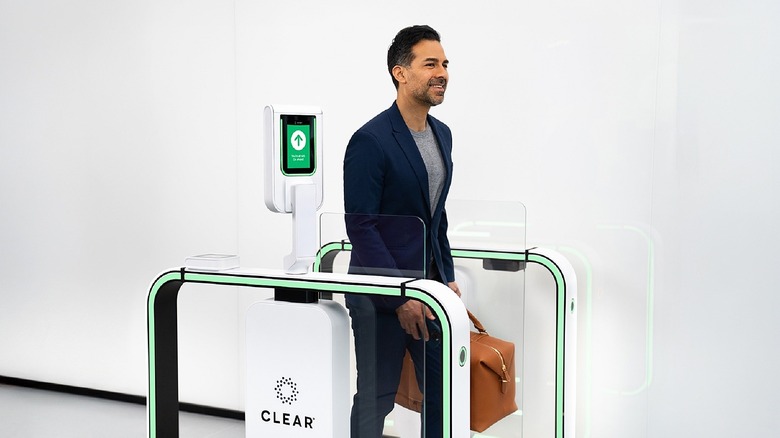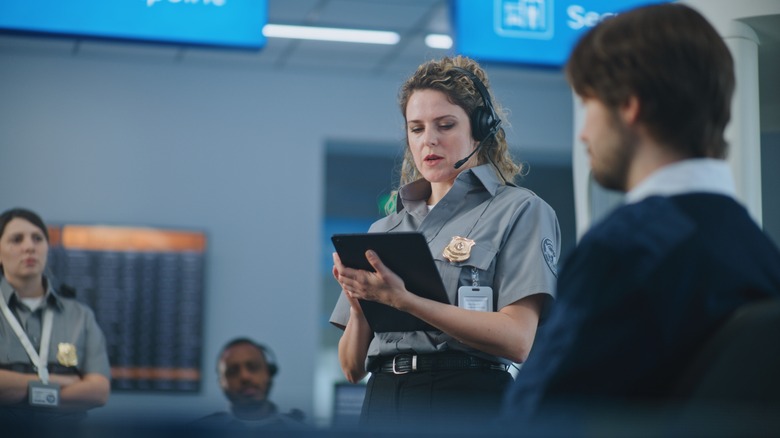How Does The TSA's Biometric eGate Actually Work?
When traveling by air, it's advised to get to the airport early to make it through security screening. That makes a lot of sense because it takes a while to get through the process, between verifying your identity, having your bags and items checked, and moving through the terminals. While interacting with TSA can be quite a hassle, they do try to introduce new technologies and new processes to make the entire experience more efficient. Recently, for example, the TSA did away with the rule that you have to remove your shoes to pass through checkpoints. And thanks to a new form of technology, a biometric-enabled eGate, the screening process may get even faster. Advanced or not, it's still worth setting up a TSA Digital ID Pass on compatible devices.
Many major airports now offer faster security screening with the technology developed by a company called Clear, in which electronic gates, or eGates, use facial recognition and biometrics to verify a traveler's identity — matching their real identity with travel documents. They replace TSA agents doing this manually, streamlining the security checkpoints. Of course, knowing the technology behind the new systems and how they actually work are two different things. Here's what you need to know before traveling through one of these airports.
How do the Clear eGates work?
As explained by the TSA in a press release, the eGates "automatically compare traveler biometrics with their identity document and boarding pass" and don't need a human agent present to complete the process. This technology should enhance "efficiency and security" when used at TSA checkpoints, speeding up the screening and, purportedly, catching identity anomalies better.
Clear also explains how the technology works in more detail. They use a three-step process. First, users enroll in a service called CLEAR+, which at the time of this writing costs $209 a year for an individual and allows them to use the gates. Second, approach an eGate lane and scan your boarding pass and travel documents. Third, when it's your turn, the gate will use built-in technology, like cameras and facial scanners, to verify your identity. If you pass, the gate will open automatically, and you can proceed to the TSA bag checks.
People are always curious what TSA's airport security body scanners actually see, and what a TSA facial scan actually does, as well, for good reason. These technologies may visually scan bodies or faces, but the resulting data can be sensitive in nature. How does that compare to the Clear eGates?
When it comes to privacy, Clear says that these systems do not transmit or handle excessive data and only in a limited capacity. They will compare a live photo of the ID you use, or one on your boarding pass, along with other basic information, to verify you are who you say you are. According to Clear, the gates do not access any sensitive or privileged information, including that compiled by the TSA. Employees cannot manually open the gates either, to enhance security and screening, but this also prevents them from accessing any information, as well.

